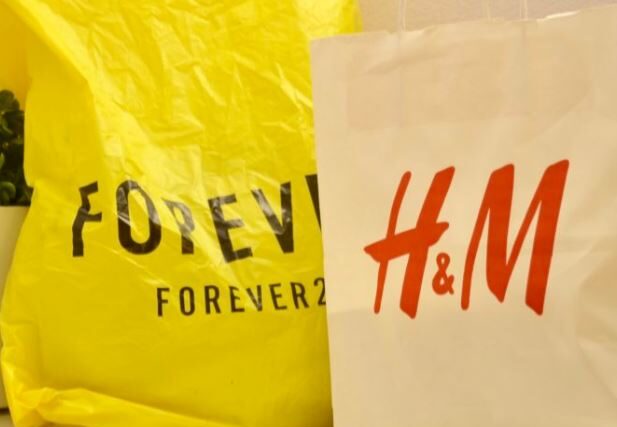The newest waves of fashion are taking the streets, popping up on influencers’ feeds, and stocking the racks of clothing stores. Brands like Shein, Zara, and Forever21 have the market cornered on “in” clothes for cheap prices. But what’s the real cost of these for these companies?
Fast fashion products are mass-produced in sweatshops that underpay workers so the company can sell their efforts at rock-bottom prices. A prominent example of human rights violations in the fast fashion industry was in Rana Plaza in Bangladesh, where over 1,000 workers who were making clothing for western brands were tragically killed as the building collapsed. Owners discovered earlier that there were cracks in the foundation, but laborers were still forced to work.
Fast fashion is also one of the world’s top polluters: these clothing brands use more than 60% synthetic fibers derived from fossil fuels, so they won’t decay when they go to landfills. Additionally, according to Ellen MacArthur Foundation, textiles can pollute toxic dyes in water sources and use “93 billion cubic meters of fresh water every year, the equivalent of 37 million Olympic-size swimming pools.” Though brands have been called out for human rights violations and their negative impact on the environment, the consumption rate has stayed the same. The fast-fashion market is expected to grow at a rate of 19% from 2020 to 2025.
To many, the instant gratification of getting a low-cost fashion item off the internet and into their closet within days outweighs ethical issues that they don’t perceive impacting their daily lives. As a result, brands have started campaigns that are “eco-friendly” and “green” to increase the rate of buyers looking for sustainability. However, few of these campaigns make a positive impact on the environment. Changing Markets Foundation, an organization campaigning for sustainable economies, has debunked many of these greenwashing schemes, exposing lines like H&M’s “Conscious Collection” which claims to “ensure sustainable sourcing” but uses more synthetic materials than its main line of clothing. Additionally, the Competition and Marketing Authority, a regulator in the United Kingdom, found that 40% of apparel with sustainable use misleading marketing campaigns.
Consumers should make informed decisions to understand the cost of fast fashion before buying from brands. Not everyone can afford sustainable clothing, which, in the case of brands like Stella McCartney or Reformation, can range from hundreds to thousands of dollars for simple clothing like shirts or bags. But more people should prioritize quality over quantity; not every outfit has to be brand new. The fast fashion industry is dangerous and deadly for the Earth and its inhabitants; let’s clean our closets and save our planet!
![]()
- United States
